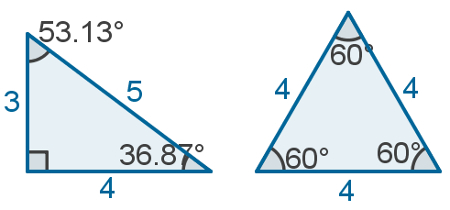You polygons are closed lines formed only by straight segments which do not intersect except at their ends. Those straight segments US polygons they are called sides, so another definition, more common than the first, is as follows: polygons are geometric figures formed entirely by sides.
In other words, for a figure be considered a polygon, it cannot contain any side curve, two of its sides cannot intersect and the figure cannot have openings.
Next, notice three non-polygons, on the left, and a polygon on the right:

The first figure has straight segments that intersect; the second is not closed; and the third has a circular part. These features make such figures non-polygons. Only the fourth figure is considered polygon for being fully in agreement with the definition of this type of figure.
Convex and non-convex polygons
One polygon is called convex when, given the points A and B in its interior, the segment AB is completely contained within the polygon, regardless of the position of the points AB. Thus, it is impossible to find two AB points inside the polygon, so at least one point of the
segment AB is on the outside of this polygon.In case you find at least one segment AB with at least one point outside the polygon, so this figure is called not convex.
The following images illustrate a left non-convex polygon and a polygonconvex on the right:

regular polygons
One polygon is called regular when all of its internal angles are congruent and, moreover, when its sides are equal in size. The figures below illustrate a non-regular polygon, on the left, and a polygonregular on the right.

Elements of a polygon
You elements of a geometric figure are other, more basic figures which can be found in them and which are given a special name because of their importance. The elements of polygons they are:
1 – Sides: The sides are the straight segments that are part of the definition of a polygon.
2 – Vertices: These are the meeting points between two consecutive sides of a polygon.
3 – anglesinternal: They are the angles formed in its interior between two consecutive sides of a polygon.
4 – anglesexternal: They are angles formed between one side of a polygon and the extension of the side following it.
5 – diagonals: They are straight line segments that connect two consecutive vertices of a convex polygon.
The following image shows each of these elements of a polygon:

O segment CD is this side polygon, and point C is one of its vertices. Angle α is one of its internal angles, and β is one of its anglesexternal. Also, the AD segment is one of its diagonals.
By Luiz Paulo Moreira
Graduated in Mathematics
Source: Brazil School - https://brasilescola.uol.com.br/o-que-e/matematica/o-que-e-poligono.htm

